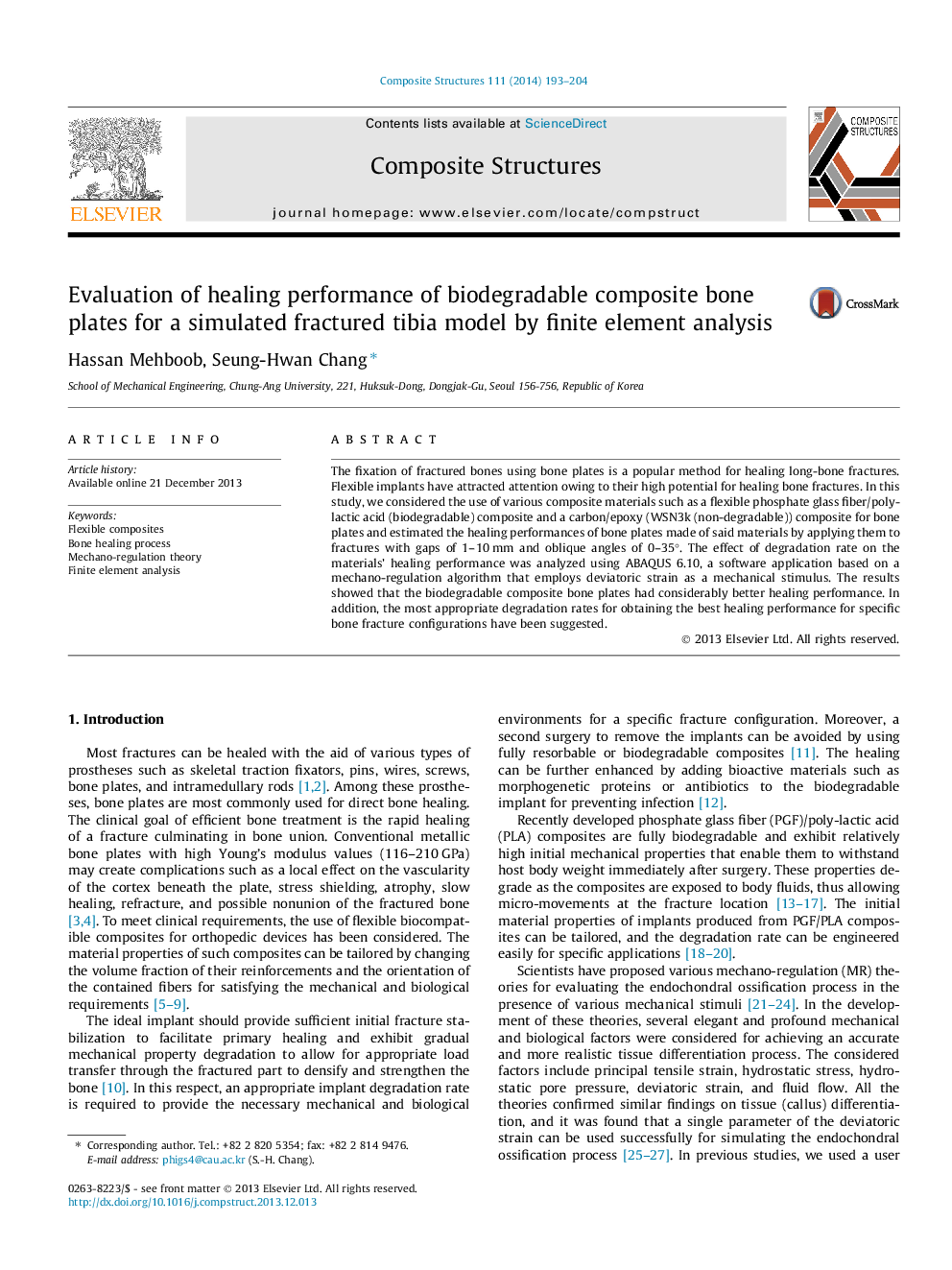| Article ID | Journal | Published Year | Pages | File Type |
|---|---|---|---|---|
| 6707866 | Composite Structures | 2014 | 12 Pages |
Abstract
The fixation of fractured bones using bone plates is a popular method for healing long-bone fractures. Flexible implants have attracted attention owing to their high potential for healing bone fractures. In this study, we considered the use of various composite materials such as a flexible phosphate glass fiber/poly-lactic acid (biodegradable) composite and a carbon/epoxy (WSN3k (non-degradable)) composite for bone plates and estimated the healing performances of bone plates made of said materials by applying them to fractures with gaps of 1-10 mm and oblique angles of 0-35°. The effect of degradation rate on the materials' healing performance was analyzed using ABAQUS 6.10, a software application based on a mechano-regulation algorithm that employs deviatoric strain as a mechanical stimulus. The results showed that the biodegradable composite bone plates had considerably better healing performance. In addition, the most appropriate degradation rates for obtaining the best healing performance for specific bone fracture configurations have been suggested.
Related Topics
Physical Sciences and Engineering
Engineering
Civil and Structural Engineering
Authors
Hassan Mehboob, Seung-Hwan Chang,
